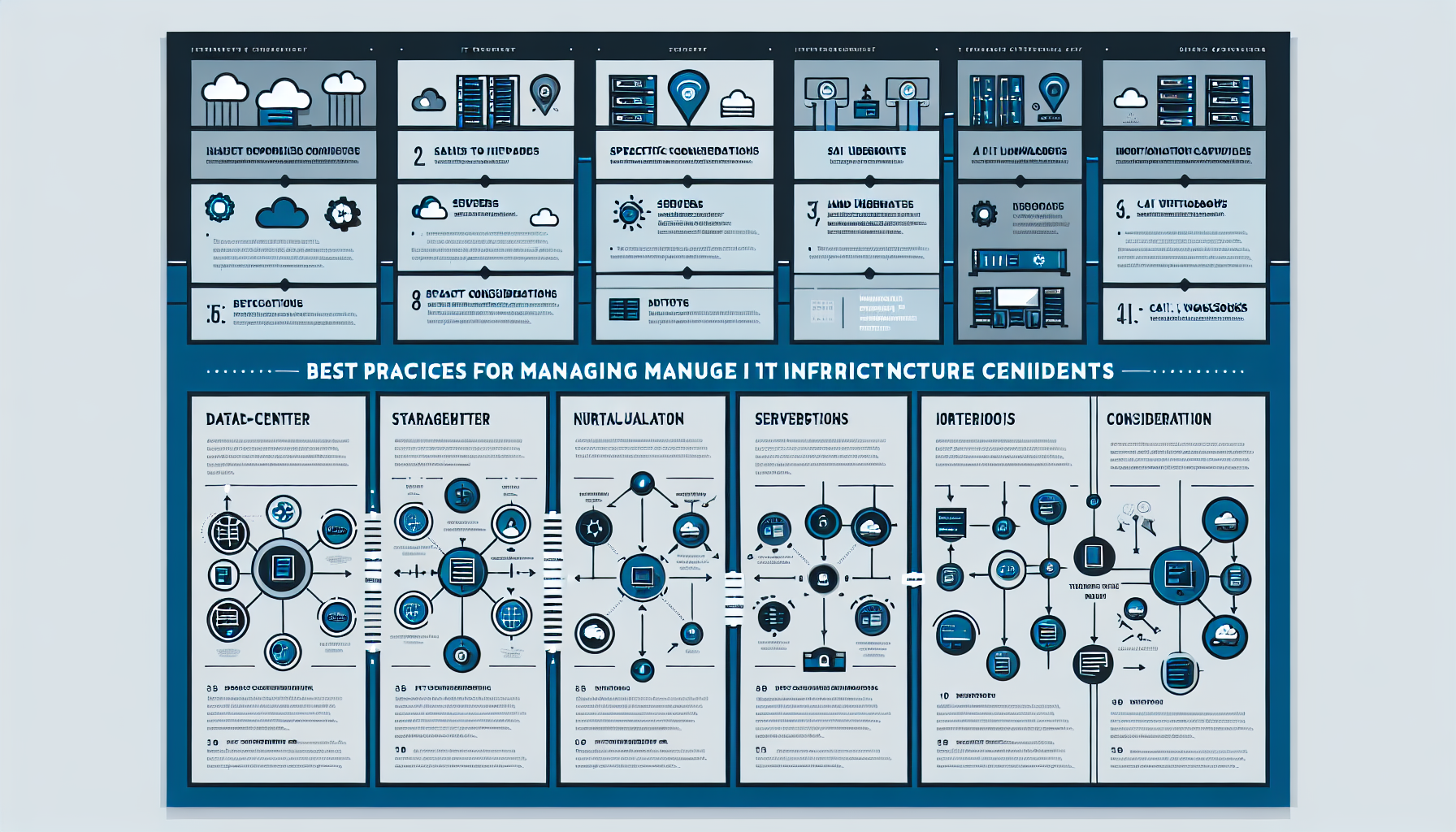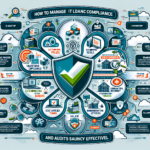Managing IT infrastructure incidents effectively is critical for minimizing downtime, reducing business impact, and ensuring a smooth recovery process. Below are some best practices for managing IT infrastructure incidents:
1. Establish an Incident Management Process
- Define Incident Types & Severity Levels:
- Categorize incidents (e.g., critical, high, medium, low) based on their potential impact on business operations.
-
Clearly define what constitutes a critical incident versus a minor issue.
-
Develop Standard Operating Procedures (SOPs):
- Document step-by-step procedures for common incidents (e.g., server failures, storage issues, network outages).
-
Ensure SOPs are easily accessible to the team.
-
Adopt an Incident Management Framework:
- Use ITIL (Information Technology Infrastructure Library) or similar frameworks to formalize incident management.
2. Use Monitoring and Alerting Tools
- Implement Real-Time Monitoring:
- Use tools like Nagios, Zabbix, Prometheus, SolarWinds, or Datadog for infrastructure monitoring.
-
Monitor key components like servers, storage, virtualization environments, Kubernetes clusters, and network devices.
-
Set Up Alerts with Proper Thresholds:
- Configure alerts for CPU, memory, disk usage, latency, and other critical metrics.
-
Avoid alert fatigue by fine-tuning thresholds to reduce false positives.
-
Enable Log Management:
- Use centralized log collection tools like ELK (Elasticsearch, Logstash, Kibana), Splunk, or Graylog for tracking and troubleshooting incidents.
3. Establish a Communication Plan
- Define Communication Channels:
- Use platforms like Microsoft Teams, Slack, or email for team collaboration during incidents.
-
Provide a clear escalation path for unresolved issues.
-
Notify Stakeholders:
- Notify key stakeholders (e.g., management, affected users) promptly during major incidents.
-
Use predefined templates for incident updates to maintain consistency.
-
Maintain Status Updates:
- Provide regular updates during incidents to keep all stakeholders informed.
4. Build a Skilled Incident Response Team
- Assign Roles and Responsibilities:
- Designate incident managers, technical leads, and support engineers.
-
Ensure clear ownership of tasks during incidents.
-
Provide Training and Drills:
- Conduct regular training sessions on new technologies and incident response processes.
- Perform simulated incident drills to test the team’s readiness.
5. Prioritize Root Cause Analysis
- Focus on Resolution First:
-
Concentrate on restoring service as quickly as possible to minimize downtime.
-
Perform Post-Incident Reviews (PIR):
- Conduct detailed reviews to identify the root cause of incidents.
-
Document lessons learned and update SOPs accordingly.
-
Track Incident Metrics:
- Measure Mean Time to Detect (MTTD), Mean Time to Acknowledge (MTTA), and Mean Time to Resolve (MTTR) to continuously improve incident handling.
6. Leverage Automation
- Automate Repetitive Tasks:
-
Use automation tools like Ansible, Puppet, or Chef to perform routine tasks like server restarts or configuration changes.
-
Implement Self-Healing Mechanisms:
-
Configure systems to automatically resolve common issues (e.g., Kubernetes pod restarts, dynamic resource scaling).
-
Adopt AI/ML for Predictive Analysis:
- Use AI-driven tools to predict and preempt incidents (e.g., predictive failure analysis for storage or GPUs).
7. Maintain Redundancy and Resilience
- Enable High Availability (HA):
-
Use clustering solutions for critical systems (e.g., Kubernetes HA clusters, Windows failover clusters).
-
Implement Disaster Recovery (DR):
- Design and test backup and restore processes for critical workloads.
-
Use replication technologies for storage and databases to ensure data availability.
-
Regularly Test Backups:
- Validate backup integrity and recovery times to ensure preparedness.
8. Use Incident Management Tools
- Adopt ITSM Platforms:
-
Use tools like ServiceNow, Jira Service Management, or Freshservice for tracking and managing incidents.
-
Enable Ticketing Integration:
- Integrate monitoring tools with ticketing systems for seamless incident reporting and tracking.
9. Document Everything
- Maintain a Knowledge Base:
- Document resolutions for common issues in a centralized repository.
-
Ensure easy access for the team during incidents.
-
Track Incident History:
- Maintain a log of past incidents to identify trends or recurring problems.
10. Continuously Improve
- Conduct Regular Audits:
-
Periodically review IT infrastructure for potential vulnerabilities and areas for improvement.
-
Monitor KPIs:
-
Track incident response metrics and set benchmarks for improvement.
-
Solicit Feedback:
- Gather feedback from team members and stakeholders to refine incident management practices.
Key Considerations for Specific IT Infrastructure
- Datacenter:
- Ensure physical security, power redundancy (UPS, generators), and cooling systems are operational.
- Storage:
- Monitor IOPS, latency, and disk health; implement snapshot-based backups.
- Servers:
- Ensure firmware and OS updates are applied regularly, and monitor hardware health.
- Virtualization:
- Monitor VM resource utilization, manage VM sprawl, and maintain hypervisor updates.
- Kubernetes:
- Monitor pod health, node status, and cluster resource availability.
- AI Workloads:
- Monitor GPU utilization, memory usage, and thermal conditions for optimal performance.
By following these best practices, you can streamline incident management, minimize downtime, and ensure that your IT infrastructure remains reliable and resilient.



